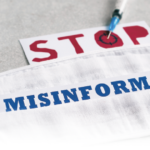The U.S. House of Representatives passed the American Rescue Plan Act of 2021 (H.R. 1319) on March 10, 2021, after Senate passage on March 6. President Biden signed the bill into law on March 11. Following is the ACR’s summary of the most impactful provisions of this third COVID-19 relief package.
Fighting COVID-19
ad goes here:advert-1
ADVERTISEMENT
SCROLL TO CONTINUE
- $160 billion for vaccine distribution and testing programs, including:
- $14 billion for research, development, distribution, administration and strengthening confidence in vaccines;
- $47.8 billion for testing, contact tracing, laboratory capacity, community testing sites and mobile testing units targeting medically underserved areas;
- $7.7 billion to hire 100,000 public health workers; and
- $50 billion to FEMA to expand vaccination efforts;
- $350 billion to support state and local government vaccine distribution and testing programs;
- $8.5 billion to rural hospitals and healthcare providers; and
- $10 billion for a Coronavirus Capital Projects Fund.
Healthcare Coverage
- Extends COBRA coverage at 100% for unemployed individuals through September 2021;
- Ends the cap on Medicaid’s drug rebate program through 2024; and
- Increases subsidies for those purchasing health insurance through Affordable Care Act marketplaces.
Direct Economic Stimulus
ad goes here:advert-2
ADVERTISEMENT
SCROLL TO CONTINUE
- Provides payments of $1,400 to individuals making less than $75,000, heads of households (e.g., single parents) earning less than $112,500 and couples making less than $150,000, plus an additional $1,400 per dependent (based on 2019 tax filings if available or 2018 data otherwise), with reduced amounts to individuals making $75,000–$80,000, heads of households earning $112,500–$120,000 and couples making $150,000–$160,000;
- Increases the child tax credit to $3,600 for children up to age 5 and as much as $3,000 for children 6–17;
- Extends additional $300 per week unemployment support through Sept. 6, 2021, and waives federal income tax on $10,200 of 2020 unemployment benefits for households earning less than $150,000; and
- Extends 15% increase in food stamp benefits through September.
Small Business Support
- $39 billion to childcare providers, to be allocated based on operating expenses and used to pay employees, pay rent, help families who cannot pay for service and purchase personal protective equipment;
- $15 billion to the Emergency Injury Disaster Loan program to provide long-term, low-interest loans from the U.S. Small Business Administration, with priority for select funds to be given to severely impacted small businesses with fewer than 10 workers;
- $25 billion for a grant program for bars and restaurants, in which eligible businesses may receive up to $10 million for payroll, mortgage and rent, utilities and food and beverages; and
- $7 billion to expand the Paycheck Protection Program, including expanded eligibility for nonprofit organizations.
Other Stimulus Programs
- $20 billion to state and local governments to help low-income households with back rent, rent assistance and utility costs;
- $125 billion to public K-12 schools to take actions to allow students to return to in-person learning, such as ventilation system updates, reducing class sizes to allow for social distancing and purchasing personal protective equipment;
- $2.75 billion to private K-12 schools for this purpose; and
- $40 billion to colleges, at least half of which must be spent on emergency financial aid grants to students and the rest of which may defray lost revenue from declining enrollment.
Tax Offsets
- Takes away employee pay deductions for up to 10 employees in publicly traded companies if 10 or more are paid more than $1 million;
- Repeals a provision giving multinational companies flexibility in deciding how to account for their interest expenses; and
- Limits to $500,000 the amount of losses certain people who own unincorporated “pass-through” businesses can use to offset other income, and thereby reduce their tax bills, through 2026.
With questions or specific advocacy needs related to COVID-19, contact [email protected].


